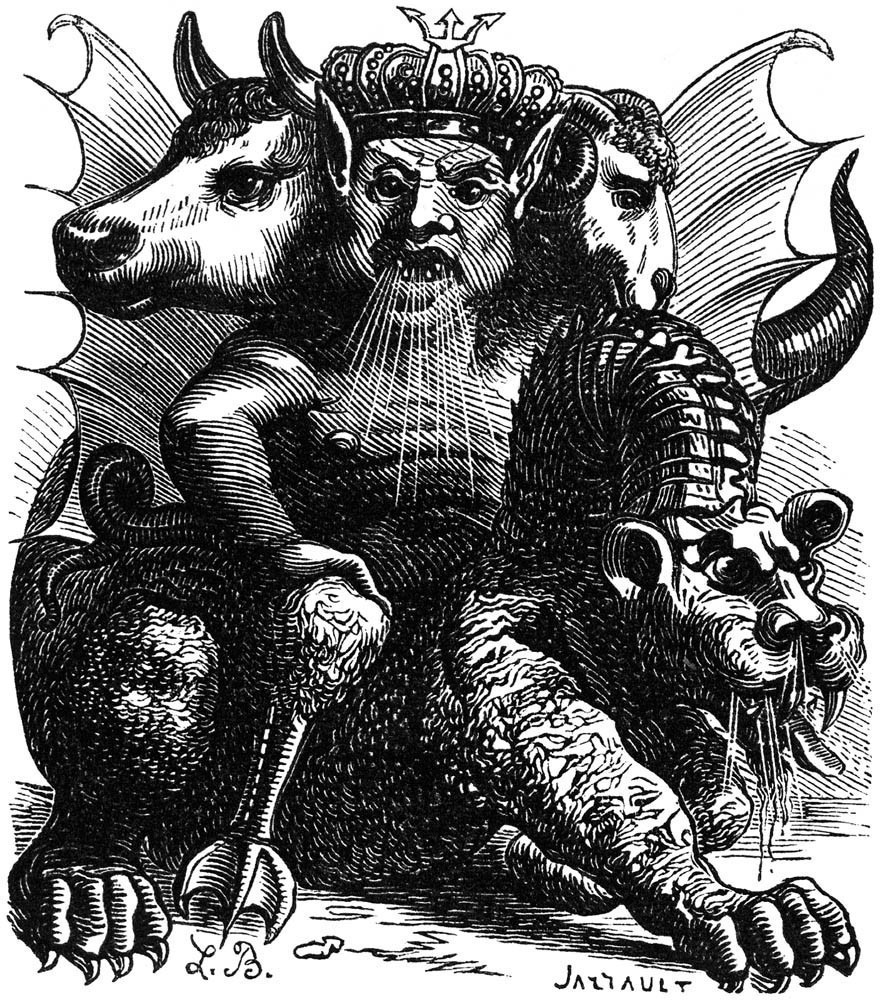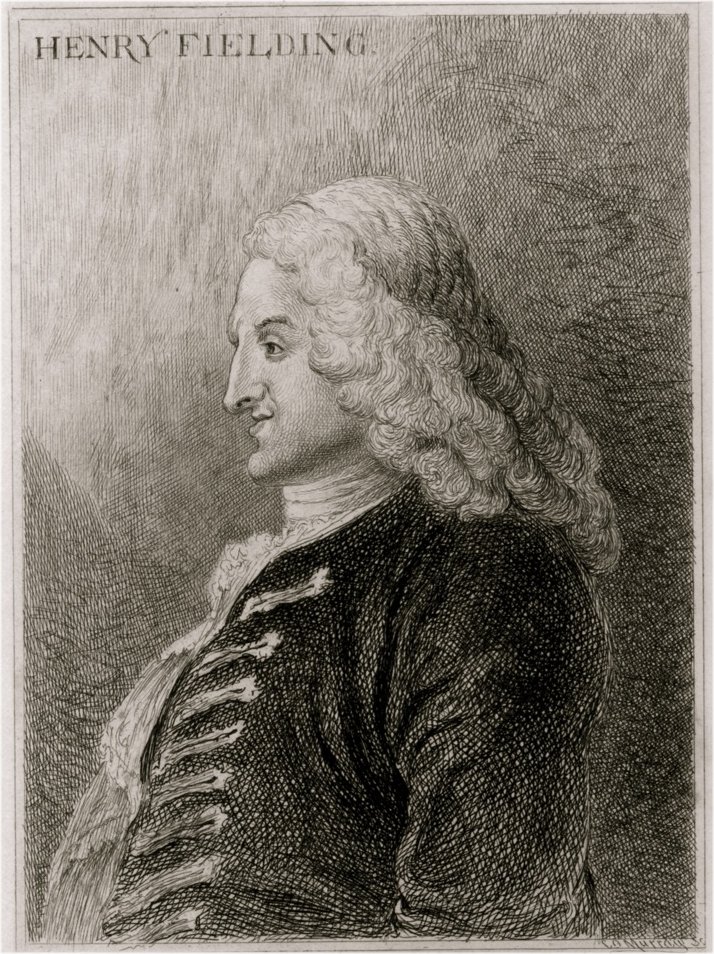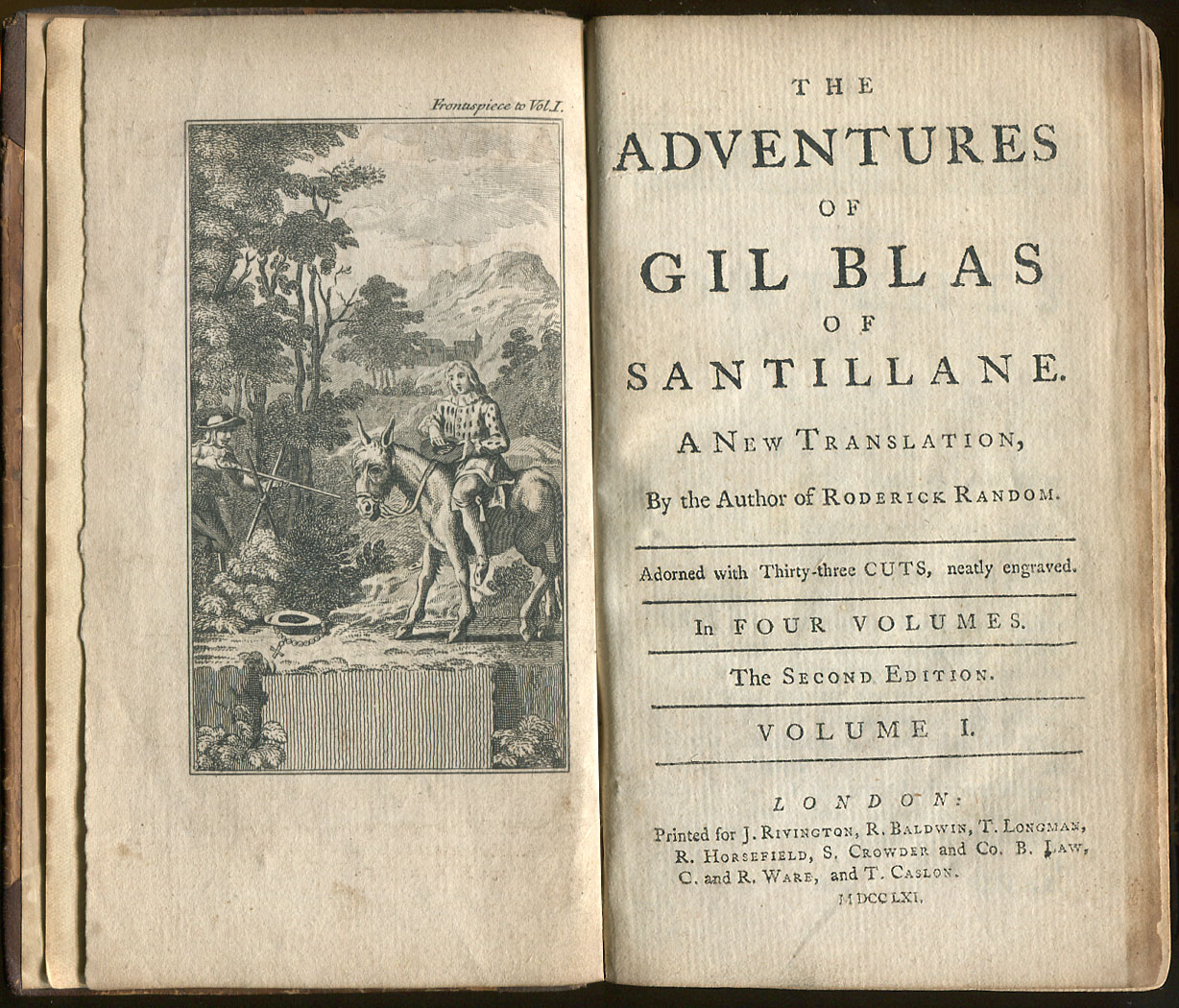|
Le Diable Boiteux (novel)
''Le Diable boiteux'' ( English: ''The Devil upon Two Sticks''; ) is a novel by the French writer Alain-René Lesage. It is set in Madrid, and tells the story of demon king Asmodeus, Don Cleophas Leandro Perez Zambullo and his beloved, Donna Thomasa. Textual history The novel was first published in 1707, and republished by the author, with many changes and additions, in 1725. It is sometimes known in English as ''Asmodeus'', and sometimes as ''The Devil on Two Sticks'', under which title the first English translation appeared in 1708, and was dramatised by Henry Fielding in 1768.Keller 1924, p. 57. Source The title and some of the incidents are borrowed from ''El Diablo cojuelo'' (1641) of the Spanish Luiz Veloz de Guevara.France 2005. But after the first few chapters Lesage departs widely from his predecessor. The very plan is abandoned, and the new episodes and characters introduced are entirely original with Lesage. Guevara ends his story with abruptness; while the Fren ... [...More Info...] [...Related Items...] OR: [Wikipedia] [Google] [Baidu] |
Alain-René Lesage
Alain-René Lesage (; 6 May 166817 November 1747; older spelling Le Sage) was a French novelist and playwright. Lesage is best known for his comic novel '' The Devil upon Two Sticks'' (1707, ''Le Diable boiteux''), his comedy ''Turcaret'' (1709), and his picaresque novel ''Gil Blas'' (1715–1735). Life Youth and education Claude Lesage, the father of the novelist, held the united positions of advocate, notary and registrar of the royal court in Rhuys. His mother's name was Jeanne Brenugat. Both Lesage's father and mother died when Lesage was very young, and he was left in the care of his uncle who wasted his education and fortune. Père Bochard, of the Order of the Jesuits, Principal of the College in Vannes, became interested in the boy on account of his natural talents. Bochard cultivated Lesage's taste for literature. At age 25, Lesage went to Paris in 1693 "to pursue his philosophical studies". In August 1694, he married the daughter of a joiner, Marie Elizabeth Huyard. ... [...More Info...] [...Related Items...] OR: [Wikipedia] [Google] [Baidu] |
Madrid
Madrid ( , ) is the capital and most populous city of Spain. The city has almost 3.4 million inhabitants and a metropolitan area population of approximately 6.7 million. It is the second-largest city in the European Union (EU), and its monocentric metropolitan area is the third-largest in the EU.United Nations Department of Economic and Social AffairWorld Urbanization Prospects (2007 revision), (United Nations, 2008), Table A.12. Data for 2007. The municipality covers geographical area. Madrid lies on the River Manzanares in the central part of the Iberian Peninsula. Capital city of both Spain (almost without interruption since 1561) and the surrounding autonomous community of Madrid (since 1983), it is also the political, economic and cultural centre of the country. The city is situated on an elevated plain about from the closest seaside location. The climate of Madrid features hot summers and cool winters. The Madrid urban agglomeration has the second-large ... [...More Info...] [...Related Items...] OR: [Wikipedia] [Google] [Baidu] |
Asmodeus
Asmodeus (; grc, Ἀσμοδαῖος, ''Asmodaios'') or Ashmedai (; he, אַשְמְדּאָי, ''ʾAšmədʾāy''; see below for other variations), is a ''prince of demons'' and hell."Asmodeus" in ''The New Encyclopædia Britannica''. Chicago: Encyclopædia Britannica Inc., 15th edn., 1992, Vol. 1, p. 635. In Judeo-Islamic lore he is the king of both daemons (jinn/''shedim'') and demons ('' divs'').Raphael Patai ''Encyclopedia of Jewish Folklore and Traditions'' Routledge 2015 page 39 Asmodeus is mostly known from the deuterocanonical Book of Tobit, in which he is the primary antagonist, or the Ars Goetia. In Peter Binsfeld's classification of demons, Asmodeus represents lust. The demon is also mentioned in some Talmudic legends; for instance, in the story of the construction of the Temple of Solomon. In Islam, he is identified with the "puppet" mentioned in the Quran, which dethroned Solomon and reigned over his kingdom until he got his kingship back. Etymology The na ... [...More Info...] [...Related Items...] OR: [Wikipedia] [Google] [Baidu] |
Henry Fielding
Henry Fielding (22 April 1707 – 8 October 1754) was an English novelist, irony writer, and dramatist known for earthy humour and satire. His comic novel '' Tom Jones'' is still widely appreciated. He and Samuel Richardson are seen as founders of the traditional English novel. He also holds a place in the history of law enforcement, having used his authority as a magistrate to found the Bow Street Runners, London's first intermittently funded, full-time police force. Early life Fielding was born 22 April 1707 at Sharpham, Somerset, and educated at Eton College, where he began a lifelong friendship with William Pitt the Elder. His mother died when he was 11. A suit for custody was brought by his grandmother against his charming but irresponsible father, Lt Gen. Edmund Fielding. The settlement placed Henry in his grandmother's care, but he continued to see his father in London. In 1725, Henry tried to abduct his cousin Sarah Andrews (with whom he was infatuated) while she was on ... [...More Info...] [...Related Items...] OR: [Wikipedia] [Google] [Baidu] |
El Diablo Cojuelo
''The Limping Devil'' ( es, El diablo cojuelo) is one of the most popular works by Luis Vélez de Guevara; it is his only novel published in 1641. In 1918 an edition published by Francisco Rodríguez Marín became well known. The story is about a student that takes the devil out of a flask where a magician had locked him. The devil, grateful, shows the student the interior of houses (as if they were toys). This way, they are able to contemplate its inhabitants in their privacy. English translations * ''The Limping Devil - El Diablo Cojuelo'' - Bilingual Edition. Stockcero, 2018. See also *Spanish science fiction References 1641 books 1640s novels Spanish novels Spanish satirical novels Picaresque novels {{17thC-novel-stub ... [...More Info...] [...Related Items...] OR: [Wikipedia] [Google] [Baidu] |
Luis Vélez De Guevara
Luis Vélez de Guevara (born Luis Vélez de Santander) (1 August 1579 – 10 November 1644) was a Spanish dramatist and novelist. He was born at Écija and was of Jewish converso descent.Antonio Dominiguez Ortiz, "Los judeoconversos en España y América." Madrid, 1971. After graduating as a sizar at the University of Osuna in 1596, he joined the household of Rodrigo de Castro, Cardinal-Archbishop of Seville, and celebrated the marriage of Philip III in a poem signed Vélez de Santander, a name which he continued to use till some years later. It seems he served as a soldier in Italy and Algiers, returning to Spain in 1602 when he entered the service of the count de Saldaña, and dedicated himself to writing for the stage. He died at Madrid on 10 November 1644. Velez de Guevara was the author of over four hundred plays, of which the best are ''Reinar despues de morir'', ''La Luna de la Sierra'', and ''El Diablo está en Cantillana''. The play ''Más pesa el rey que la sangre ... [...More Info...] [...Related Items...] OR: [Wikipedia] [Google] [Baidu] |
Gil Blas
''Gil Blas'' (french: L'Histoire de Gil Blas de Santillane ) is a picaresque novel by Alain-René Lesage published between 1715 and 1735. It was highly popular, and was translated several times into English, most notably as The Adventures of Gil Blas of Santillane, by Tobias Smollett in 1748. Plot summary Gil Blas is born in misery to a stablehand and a chambermaid of Santillana in Cantabria, and is educated by his uncle. He leaves Oviedo at the age of seventeen to attend the University of Salamanca. His bright future is suddenly interrupted when he is forced to help robbers along the route and is faced with jail. He becomes a valet and, over the course of several years, is able to observe many different classes of society, both lay and clerical. Because of his occupation, he meets many disreputable people and is able to adjust to many situations, thanks to his adaptability and quick wit. He finally finds himself at the royal court as a favorite of the king and secretary to ... [...More Info...] [...Related Items...] OR: [Wikipedia] [Google] [Baidu] |
Tony Johannot
Antoine Johannot, known commonly as Tony Johannot (9 November 1803 – 4 August 1852), was a French engraver, illustrator and painter. Biography He was born in Offenbach am Main. His father, François Johannot (c. 1760–1838), owned a silk factory in Germany, where the family had fled after the revocation of the Edict of Nantes. He was a painter who was involved in the development of lithography in France. The two older brothers of Tony, Charles and Alfred, were engravers, and Alfred also worked as a painter and draughtsman. Tony learnt engraving from his brothers and helped Alfred produce illustrations of books by James Fenimore Cooper and Walter Scott. Tony came to prefer wood-engraving, but resumed etching in 1845. His historical paintings were exhibited at the Paris Salon for the first time in 1831. He became an illustrator much prized for his elegance, his diversity, and the lively character of his drawings, which were converted to engravings either by himself or by suc ... [...More Info...] [...Related Items...] OR: [Wikipedia] [Google] [Baidu] |
Augustus Leopold Egg
Augustus Leopold Egg Royal Academy, RA (2 May 1816, in London – 26 March 1863, in Algiers) was a British Victorian artist, and member of The Clique (art group), The Clique best known for his modern triptych ''Past and Present (paintings), Past and Present'' (1858), which depicts the breakup of a middle-class Victorian family. Biography Egg was born to Joseph and Ann Egg, and baptised in St James's Church, Piccadilly, on 30 May 1816. He had an elder brother, George Hine Egg. His father Joseph Egg was a wealthy gunsmith from the Durs Egg, distinguished gun making family, who immigrated to London from Huningue, Alsace.Hilarie Faberman, 'Egg, Augustus Leopold (1816–1863)’, Oxford Dictionary of National Biography, Oxford University Press, Sept 2004 Egg was educated in the schools of the Royal Academy, beginning in 1836. Egg was a member of The Clique, a group of artists founded by Richard Dadd and others in the late 1830s (c. 1837). Egg sought to combine popularity with moral an ... [...More Info...] [...Related Items...] OR: [Wikipedia] [Google] [Baidu] |
Napoléon Thomas
Napoleon Bonaparte ; it, Napoleone Bonaparte, ; co, Napulione Buonaparte. (born Napoleone Buonaparte; 15 August 1769 – 5 May 1821), later known by his regnal name Napoleon I, was a French military commander and political leader who rose to prominence during the French Revolution and led successful campaigns during the Revolutionary Wars. He was the ''de facto'' leader of the French Republic as First Consul from 1799 to 1804, then Emperor of the French from 1804 until 1814 and again in 1815. Napoleon's political and cultural legacy endures to this day, as a highly celebrated and controversial leader. He initiated many liberal reforms that have persisted in society, and is considered one of the greatest military commanders in history. His wars and campaigns are studied by militaries all over the world. Between three and six million civilians and soldiers perished in what became known as the Napoleonic Wars. Napoleon was born on the island of Corsica, not long after ... [...More Info...] [...Related Items...] OR: [Wikipedia] [Google] [Baidu] |







